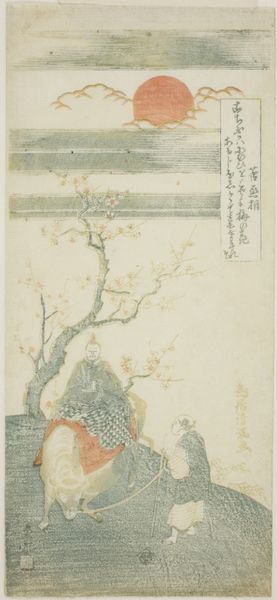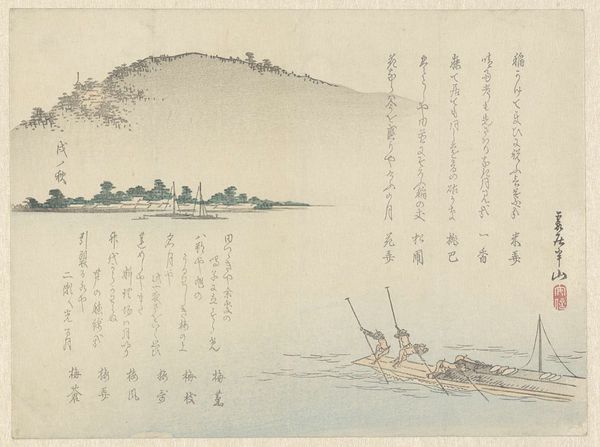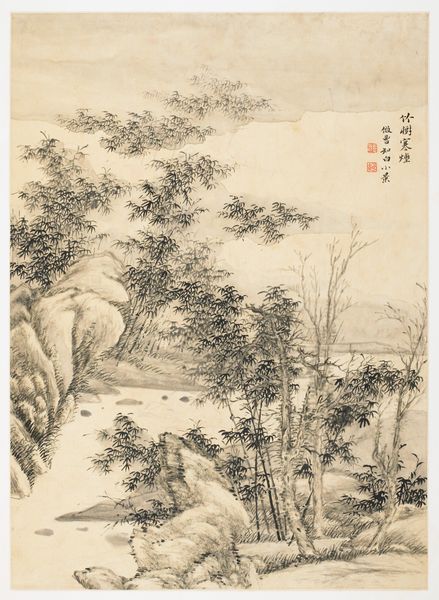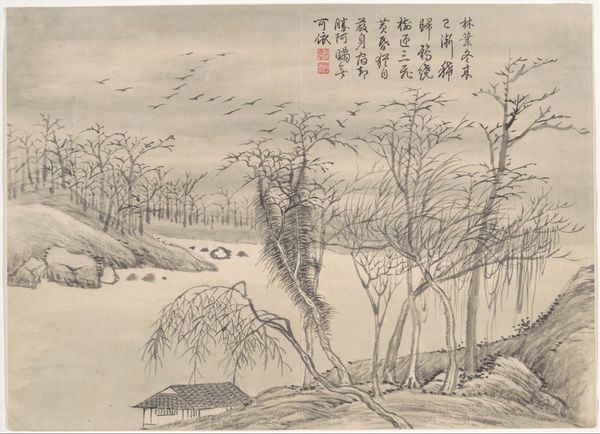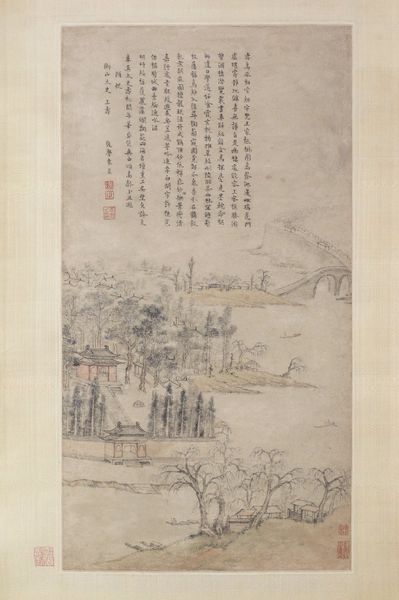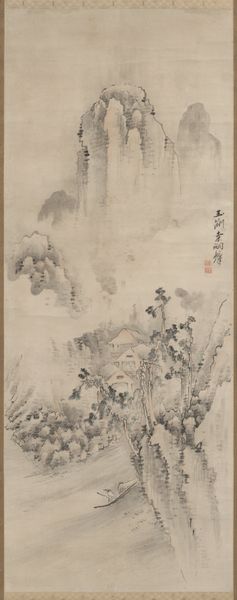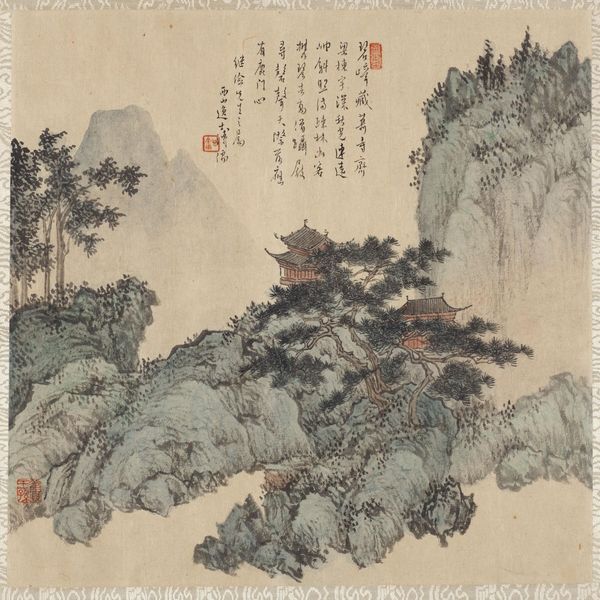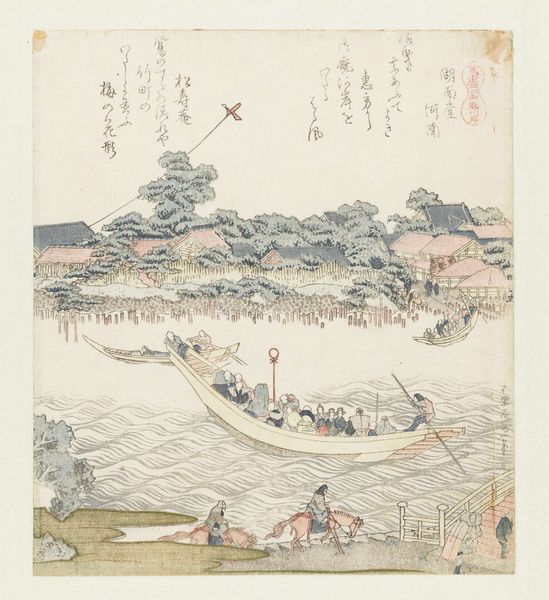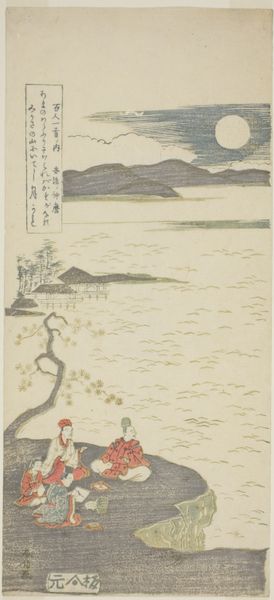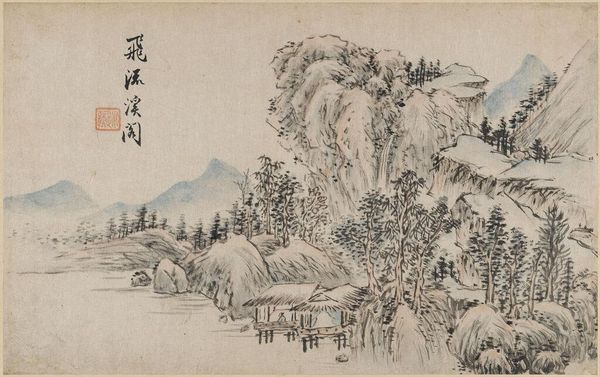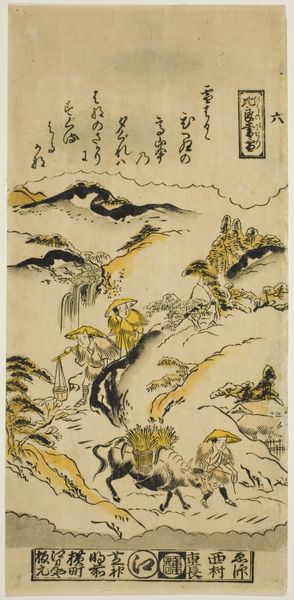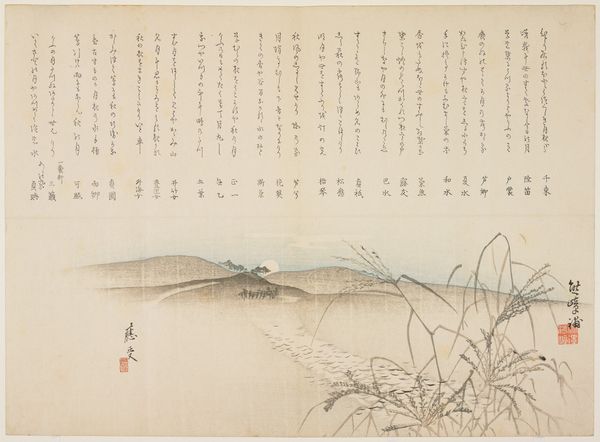
print, woodblock-print
#
water colours
# print
#
asian-art
#
landscape
#
ukiyo-e
#
personal sketchbook
#
woodblock-print
#
botanical drawing
#
calligraphy
Dimensions: height 196 mm, width 178 mm
Copyright: Rijks Museum: Open Domain
Curator: Looking at "Brokaat schelp" by Katsushika Hokusai, created around 1821 and held here at the Rijksmuseum, I’m struck by how the artist captures a serene yet dynamic waterscape with villages nestled along the shore. What is your first impression? Editor: It feels incredibly detailed, despite its seemingly small scale. There's a beautiful juxtaposition of textures—the smooth water, the rough-hewn buildings, the delicate calligraphy above. I find the mood rather melancholic, almost nostalgic. Curator: Indeed. Considering Hokusai's process, this is a woodblock print, meaning it's part of a larger world of artisanal craft. Each color represents a different block meticulously carved and pressed. This makes us think about the labor involved in the mass production of such images and how they were consumed by the public. Editor: Right, and those prints were circulating within a specific socio-cultural landscape, one where imagery held considerable political sway. Notice the inclusion of text. Who was the audience for such complex scenes? Were they largely for personal appreciation or intended to convey specific messages within the political or artistic context of the time? Curator: That text ties deeply into Ukiyo-e traditions, bridging the visual and literary worlds of the era. Think about how the materials themselves—the wood, the pigments, the paper—contributed to the print’s accessibility. They were tools that democratized art. This also reflects the socio-economic strata involved in production— from farmers providing raw materials to artisans to vendors to buyers, often common merchants and consumers. Editor: Absolutely, the availability and affordability also impacted who could interpret and derive meaning from this work. Beyond the materiality and the social factors, think about the institutions supporting and showcasing works such as these. Was the aim to provide cultural guidance? I also wonder about the place of Hokusai within art history. Curator: It certainly speaks to a democratization of art that subverts the traditionally privileged world of painting. Now, our focus shifts slightly away from who could own the print to how these printed images redefined artistry. By acknowledging that such meticulously crafted objects held inherent value, our ideas around what "art" really is can be significantly reconfigured. Editor: And that reconceptualization undoubtedly informed artistic movements moving forward, broadening their scope and vision, challenging orthodox practices to shape the course of art as a public phenomenon. Thank you for pointing that out. Curator: The pleasure was mine. Looking deeper reveals a captivating interaction of production, public role and a delicate artistic sentimentality which make these images all the more alluring and culturally informative. Editor: Agreed, it reveals layers within seemingly simple forms and, moreover, expands our understanding of art beyond conventional aesthetic judgments and contextual understanding.
Comments
No comments
Be the first to comment and join the conversation on the ultimate creative platform.

